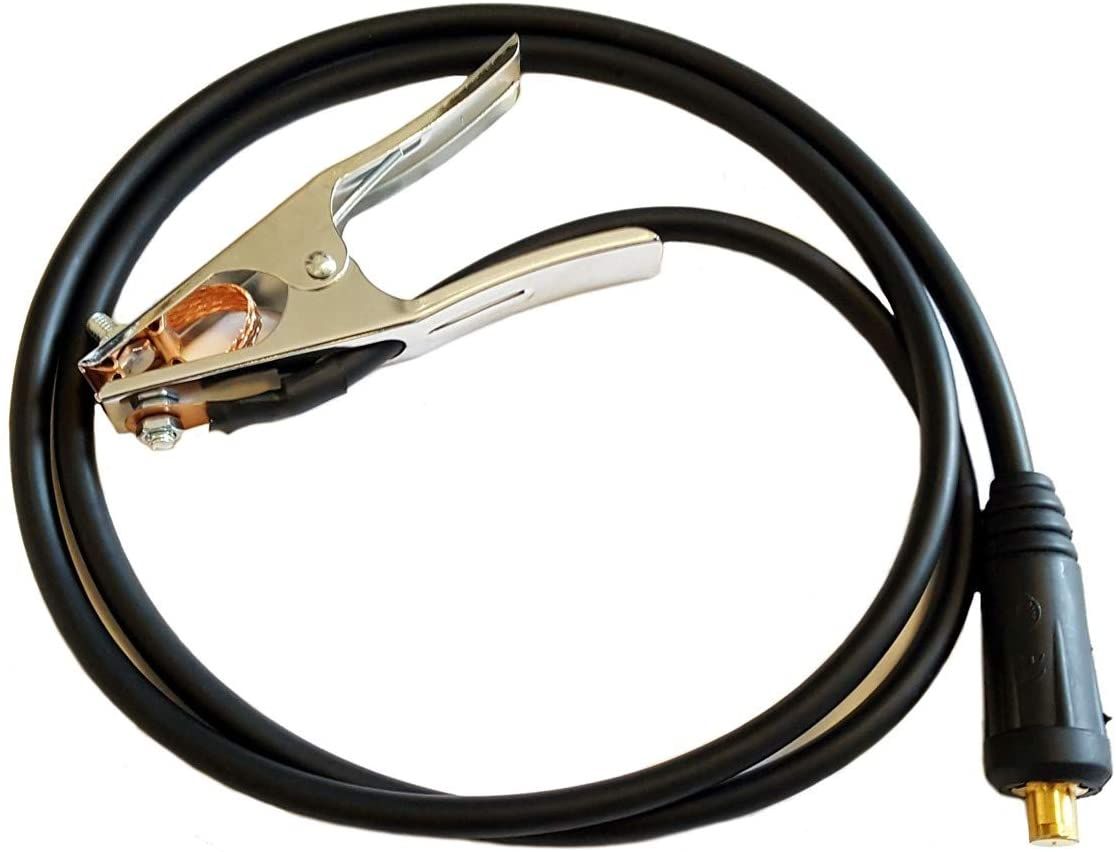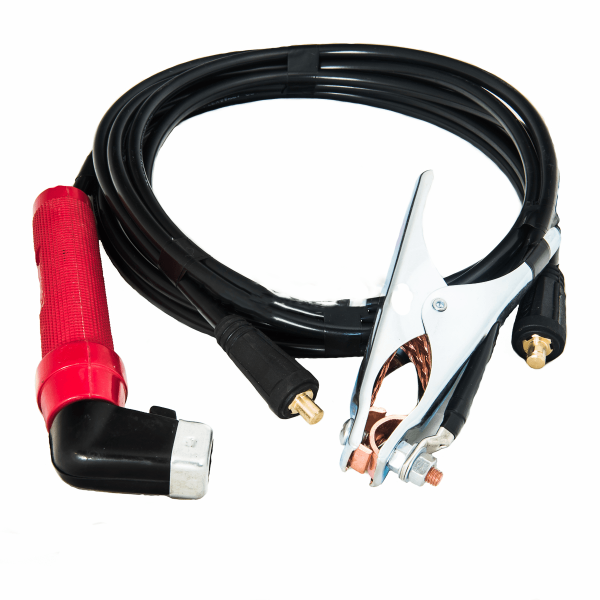Welding Cables and Leads
Welding Supplies Direct stock and supply welding cables for any application, in any length with any dinse connection size and any end terminations such as earth clamps, lugs or MMA electrode holders. If you cannot find what you need on this page please feel free to contact our sales team who will be happy to put together a quotation for the exact item you require. Shop now!
What welding leads do I need?
The welding leads you require will depend on the type of welding you are doing. If you are carrying out MMA (arc) welding you will need an electrode holder cable and an earth lead with an earth clamp fitted. If you are TIG welding you will need a TIG torch and an earth lead with an earth clamp. The same goes for MIG welding, you will need a MIG torch and an earth lead with an earth clamp.
This is an example of a welding earth cable with a clamp fitted.

What do I need to consider when choosing welding cables?
There are three main points to consider when selecting your welding leads. Firstly, you will need to know how the cables will connect to your welding machine.. most machines nowadays will utilise what is known as a dinse type connector; these look like a small brass female socket on the front panel of the machine. The welding lead will then have a male brass plug on the end of the lead. These two parts marry up and twist to secure the connection to the welding power source.
Dinse connections come in different sizes. Most common are 10MM - 25MM and 35MM - 50MM. The sizes of these connectors refers to the diameter of copper cable that the dinse connectors can be fitted to. If you need assistance in identifying which connector size your machine has we're happy to help. Just send a picture over to us via email.
This is an example of a dinse cable plug that can often be found as one of the terminations on a welding lead. Notice the connection diameter is indicated on the black rubber boot (DKJ35-50 - meaning this particular dinse connector is a 35MM - 50MM)

Once you know which dinse connector size you need you'll need to know the length of lead you require. This is easily identified by measuring the distance between the position of your welder and your workpiece. We find that 3M, 5M and 10M are common choices. However, we can make any length of welding lead you require.
Finally, you'll need to know the amperage you are going to be welding at. This is because the welding cables / leads and the accessories that are attached to them, such as electrode holders and earth clamps, need to be able to handle the current you're welding with. It is often a good idea to overspec this to make sure the lead and accessories will not get too hot when being used; this will prevent melting of or damage to any of the components
I.e. when welding at 200 amps you may want to choose a lead set capable of handling up to 300 or 400 amps.
What are welding leads made from?
Welding leads / cables are made from copper cored cable that is usually overlaid with flexible rubber or PVC. The copper cable can vary in thickness, depending on the welding current being used. The welding cable will then have a termination fitted to it, such as a cable lug, dinse connector, earth clamp or a welding electrode / rod holder.
How do I connect welding leads to my machine?
Firstly, you need to identify the end of the cable that connects to your machine. Usually this end will have a dinse connector on it, it will have a black "boot" around a small block of copper with a small round connector protuding from it, this will also have a small keyway or notch on it.
Next, identify which connection socket the lead you have at hand needs to go into. This can be identified by looking at the type of welding rods you have ( whether they run on electrode positive or electrode negative; this can usually be found on the box that the electrodes came in). Alternatively, if you're MIG welding you'll need to know whether you want to run straight polarity or reversed polarity (for reversed polarity you want the earth lead to be in the + socket, vice versa if using straight polarity). For TIG welding you'll mostly want to have your earth lead in the + socket.
We usually start with the earth lead. Once the earth lead is connected you can connect the other lead to the other dinse connector (or if you're MIG welding make sure the torch is connected up to the other connector, this can be done by plugging in the fly lead on the front of the machine or selecting the polarity inside the wire feed enclosure).
You connect the lead itself by marrying up the keyways on the dinse connector plug and the dinse connector socket, pushing it all the way in and then twisting in a clockwise direction to lock it in to place. Give it a slight pull to make sure it won't come out when you're welding and then you're good to go!




